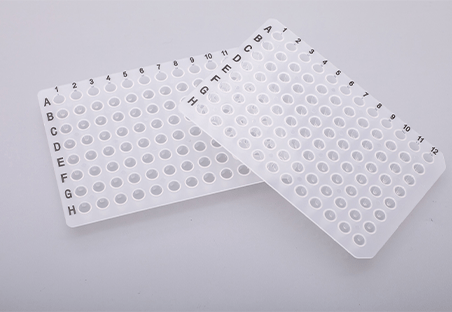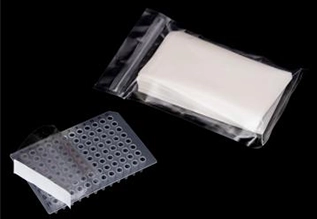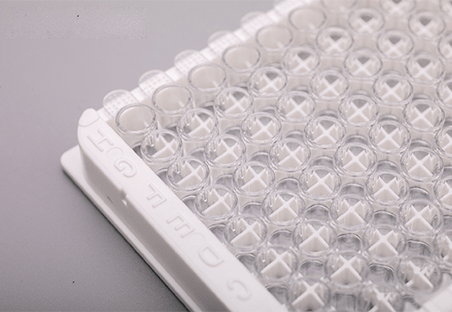PCR stands for polymerase chain reaction, which is a laboratory technique used to amplify DNA. PCR tubes are small, thin-walled tubes that are used to hold the DNA sample, primers, polymerase enzyme, and other reagents needed for the PCR reaction. PCR tubes are typically made of polypropylene, which is a durable and heat-resistant material. They are also typically sterile and free of RNase and DNase contamination, which is important to prevent the degradation of the DNA sample. Here we will explore the types of PCR tubes and share some ways to choose the proper one.
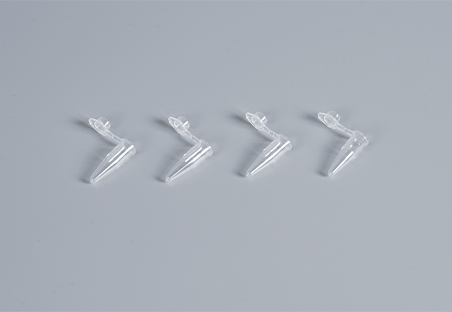
What are the Types of PCR Tubes?
PCR tubes can be classified in a number of ways, including:
By size
PCR tubes are available in a variety of sizes, ranging from 0.1 mL to 2.0 mL. The most common size is PCR tube 0.2 mL, which is compatible with most thermal cyclers.
By material
PCR tubes are typically made of polypropylene (PP), polyethylene (PE), polycarbonate (PC), or polystyrene (PS).
- PP is the most common material used for PCR tubes, as it is durable, heat-resistant, and resistant to chemical attack.
- PE is less durable than PP, but it is more flexible and easier to label.
- PC is a strong and durable material that is often used for high-throughput PCR applications.
- PS is a lightweight and inexpensive material that is often used for low-throughput PCR applications.
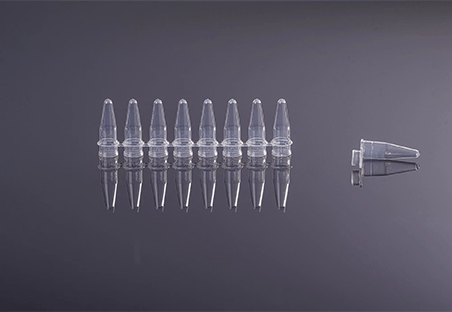
By cap type
PCR tubes are available in a variety of cap types, including skirted caps, flat caps, and domed caps.
- Skirted caps are the most common type of cap used for PCR tubes, as they provide a stable base for the tubes to sit on in the thermal cycler.
- Flat caps are often used for PCR tubes that are used in high-throughput applications, as they are easier to load and unload from thermal cyclers.
- Domed caps are often used for PCR tubes that are used for long PCR reactions, as they help to prevent evaporation of the sample.
By sterility
PCR tubes are available in both sterile and non-sterile formats.
- Sterile tubes are used for applications where it is important to avoid contamination of the sample, such as when working with sensitive DNA samples.
- Non-sterile tubes are used for applications where contamination is not a concern, such as when working with non-sensitive DNA samples or when performing non-critical PCR reactions.
In addition to these general classifications, PCR tubes can also be classified by their specific applications. For example, there are PCR tubes that are designed specifically for high-throughput PCR, qPCR, digital PCR, and next-generation sequencing. There are also PCR tubes that are designed for specific clinical applications, such as the diagnosis of infectious diseases or the detection of genetic mutations.
When choosing PCR tubes, it is important to select tubes that are appropriate for the size and type of your PCR reaction, as well as the sterility requirements of your application.
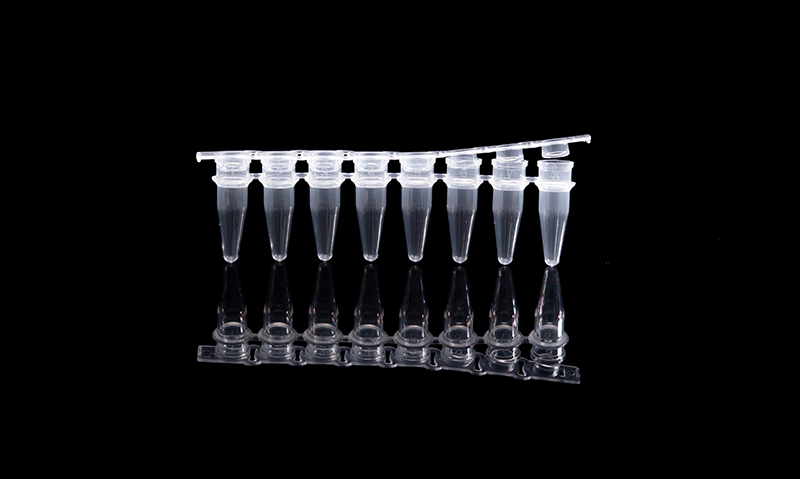
Differences of PCR Strip Tubes and PCR Tubes
PCR strip tubes and PCR tubes are both used to hold the DNA sample, primers, polymerase enzyme, and other reagents needed for the polymerase chain reaction (PCR). However, there are a few key differences between the two types of tubes.
- PCR strip tubes are strips of 8 or 12 PCR tubes that are connected together. This makes them easier to handle and load into thermal cyclers, and it also reduces the risk of contamination. PCR strip tubes are typically made of the same materials as PCR tubes, such as polypropylene, polyethylene, polycarbonate, or polystyrene.
- PCR tubes are individual tubes that are not connected together. They are available in a wider range of sizes than PCR strip tubes, and they can be used with a variety of different types of thermal cyclers. PCR tubes are also available in a wider range of materials, including glass and metal.
Here is a table that summarizes the key differences between PCR strip tubes and PCR tubes:
| Characteristic | PCR strip tubes | PCR tubes |
| Number of tubes | 8 or 12 | 1 |
| Connectedness | Yes | No |
| Ease of handling | Easier | More difficult |
| Risk of contamination | Lower | Higher |
| Range of sizes | Smaller | Larger |
| Range of materials | Smaller | Larger |
| Compatibility with thermal cyclers | More limited | More extensive |
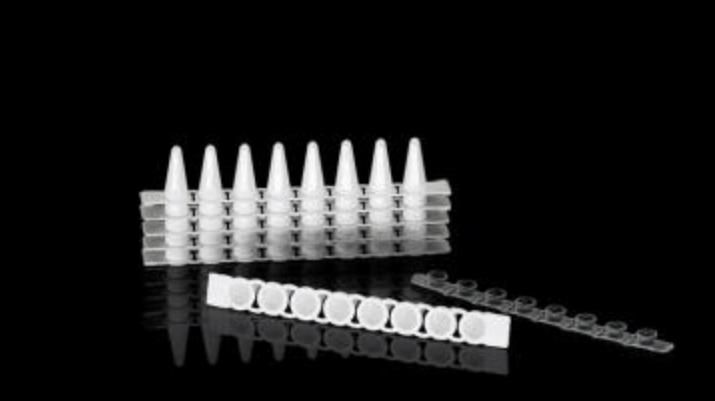
How to Choose the PCR Tubes?
Here are some factors to consider when choosing PCR tubes:
- Volume: PCR tubes are available in a variety of volumes, typically ranging from 0.1 mL to 2.0 mL. Choose a volume that is appropriate for your PCR reaction. If you are unsure, it is better to err on the side of caution and choose a larger volume.
- Format: PCR tubes come in two main formats: individual tubes and strips. Individual tubes are more flexible and can be used in any PCR thermal cycler. Strip tubes are more efficient for high-throughput PCR reactions.
- Material: PCR tubes are typically made of polypropylene (PP) or polycarbonate (PC). PP is less expensive and more durable than PC, but it is also less transparent. PC is more transparent and has better heat transfer properties, but it is also more expensive.
- Cap type: PCR tubes are available with either domed or flat caps. Domed caps are more common and are easier to open and close. Flat caps are less common, but they are more compatible with some PCR thermal cyclers.
- Optical properties: Some PCR tubes are specially designed for real-time PCR (qPCR). These tubes have thin walls and are made of a material that is transparent to the wavelengths of light used in qPCR.
In addition to these factors, you may also want to consider the following when choosing PCR tubes:
- Sterilization: PCR tubes are typically pre-sterilized, but it is important to check the documentation to be sure.
- Purity: PCR tubes should be free of contaminants that could interfere with your PCR reaction.
- Price: PCR tubes can range in price from a few cents to a dollar each. Choose a tube that fits your budget and needs.
Here are some additional tips for choosing PCR tubes:
- If you are using a real-time PCR thermal cycler, be sure to choose tubes that are compatible with your instrument.
- If you are working with sensitive samples, choose tubes that are made of a high-purity material.
- If you are on a budget, there are a number of affordable PCR tubes available.
Once you have considered all of these factors, you should be able to choose the right PCR tubes for your needs.
Conclusion
PCR tubes are an essential tool for PCR amplification. By following the tips above, you can find the proper tubes effectively and obtain reliable results.
